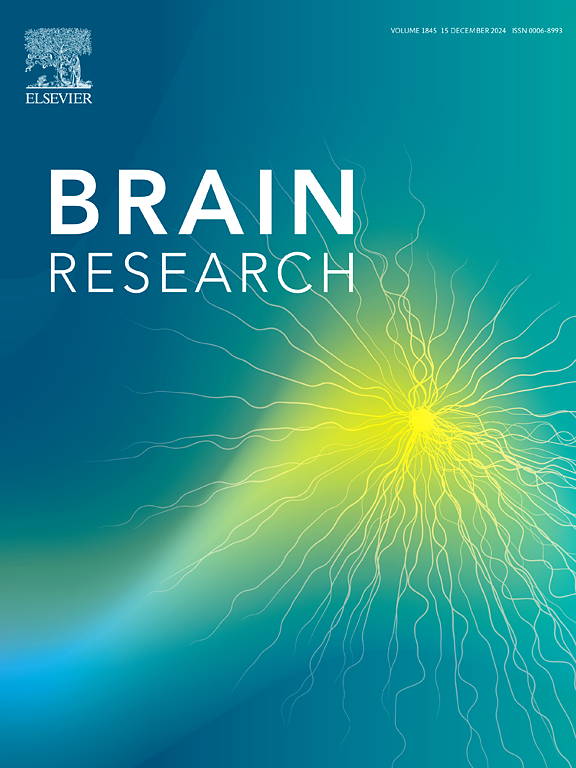Rest2Task:静息态功能连接中任务特异性成分建模及应用
IF 2.6
4区 医学
Q3 NEUROSCIENCES
引用次数: 0
摘要
在静息状态活动中观察到的大脑网络并非完全 "无任务"。相反,它们暗示了为适应认知功能而准备的分层结构。最近的研究越来越多地证明,静息态 fMRI 有潜力预测任务执行过程中的局部激活或全局连接组。然而,关于静息态大脑网络中独特和共享的任务特异性成分、局部激活和全局连接组模式的阐释,仍然存在不确定性。还需要一个连贯的框架来整合这些任务特异性成分,以预测局部激活和全局连接组模式。在这项工作中,我们介绍了基于偏最小二乘法多元回归算法的 Rest2Task 模型,它有效地整合了静息态连接到局部激活和全局连接组模式的映射。通过分析回归模型的系数,我们提取了与各种任务的大脑局部激活或全局连接组相对应的任务特异性静息态成分,并将其应用于大脑侧化预测和精神疾病的诊断。我们的模型有效地替代了传统的全脑功能连接(FC),用于预测功能侧化和诊断脑部疾病。我们的研究首次量化了静息态功能连接模式(成分)对不同任务的贡献,并赋予这些成分与特定任务相关的背景信息。特定任务的静息态成分为大脑侧化处理和疾病诊断提供了新的见解,有可能为大脑网络应对任务的适应性转变提供新的视角。本文章由计算机程序翻译,如有差异,请以英文原文为准。
Rest2Task: Modeling task-specific components in resting-state functional connectivity and applications
The networks observed in the brain during resting-state activity are not entirely “task-free.” Instead, they hint at a hierarchical structure prepared for adaptive cognitive functions. Recent studies have increasingly demonstrated the potential of resting-state fMRI to predict local activations or global connectomes during task performance. However, uncertainties remain regarding the unique and shared task-specific components within resting-state brain networks, elucidating local activations and global connectome patterns. A coherent framework is also required to integrate these task-specific components to predict local activations and global connectome patterns. In this work, we introduce the Rest2Task model based on the partial least squares-based multivariate regression algorithm, which effectively integrates mappings from resting-state connectivity to local activations and global connectome patterns. By analyzing the coefficients of the regression model, we extracted task-specific resting-state components corresponding to brain local activation or global connectome of various tasks and applied them to the brain lateralization prediction and psychiatric disorders diagnostic. Our model effectively substitutes traditional whole-brain functional connectivity (FC) in predicting functional lateralization and diagnosing brain disorders. Our research represents the inaugural effort to quantify the contribution of patterns (components) within resting-state FC to different tasks, endowing these components with specific task-related contextual information. The task-specific resting-state components offer new insights into brain lateralization processing and disease diagnosis, potentially providing fresh perspectives on the adaptive transformation of brain networks in response to tasks.
求助全文
通过发布文献求助,成功后即可免费获取论文全文。
去求助
来源期刊

Brain Research
医学-神经科学
CiteScore
5.90
自引率
3.40%
发文量
268
审稿时长
47 days
期刊介绍:
An international multidisciplinary journal devoted to fundamental research in the brain sciences.
Brain Research publishes papers reporting interdisciplinary investigations of nervous system structure and function that are of general interest to the international community of neuroscientists. As is evident from the journals name, its scope is broad, ranging from cellular and molecular studies through systems neuroscience, cognition and disease. Invited reviews are also published; suggestions for and inquiries about potential reviews are welcomed.
With the appearance of the final issue of the 2011 subscription, Vol. 67/1-2 (24 June 2011), Brain Research Reviews has ceased publication as a distinct journal separate from Brain Research. Review articles accepted for Brain Research are now published in that journal.
 求助内容:
求助内容: 应助结果提醒方式:
应助结果提醒方式:


